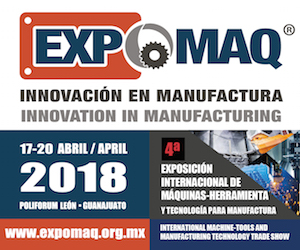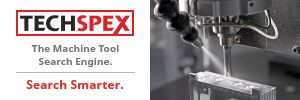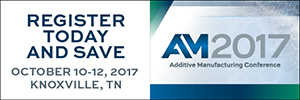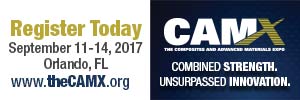Aluminum Intensity
When Chrysler unveiled the Plymouth Prowler in Detroit at the 1993 North American International Auto Show, it was a concept car. Concept cars tend to be stunning examples of designers’ imaginations, of what could be, only if…At the 1997 North American International Auto Show, the Prowler is, in effect, akin to the Neon and the Breeze. Like them, it is a production car. Of course, this is not your run-of-the-mill vehicle.
For one thing, beneath that purple paint are more than 900 pounds of aluminum. Given that the whole thing tips the scales at 2,780 pounds, and given the fact that aluminum is light, that is, to say the very least, a lot of aluminum. The point is: This hot rod is not only out-of-the-box in terms of the design thinking that’s behind it, it is also way out there in terms of driving forward alternative approaches to productionizing the material.
Consider this, for example. For years, commercial aircraft have been riveted. Cars, on the other hand, have been welded, typically with resistance welding. But what if spot welds were replaced with rivets? The Chrysler engineers—as the company’s ad says—questioned everything. And they asked a question about rivets and welds. Although there is welding on the Prowler —a prime example is the frame, as will be noted below—the spot welds are replaced by rivets. Of course, rivets have typically taken longer to apply than spot welds, and since cycle time is key in automotive, there was a concern about the riveting time requirement. So it was a matter of pushing that technology forward. Rivets are placed on the Prowler in a one-second cycle. (One interesting aspect of using this mechanical joining method: sheets of different thicknesses can be put together.) But then there is the issue of stiffness. Which led to the need to utilize epoxy adhesives. So now there is a combination of technologies, with rivets used in combination with adhesives. The result is a structure with a stiffness that’s improved by 40%.
“At Chrysler,” says Dr. Saad M. Abouzahr, Prowler Materials Executive, Team Prowler, “we approach new technology with an open mind. If it is the best way, then we do it.” As with Prowler, they did just that.
As Abouzahr admits, there is a wealth of know-how existing relating to how to process steel for automotive production. There isn’t a comparable knowledge base for aluminum. But as Chrysler, like all carmakers, faces the need to develop vehicles that are lighter and therefore provide more miles per gallon, there is a need to start aggressively climbing the learning curve so that there are material alternatives.
Chrysler has worked with aluminum before. Abouzahr references, for example, the “Neon Lite” project that was conducted in 1994. “We learned quite a bit about processing,” Abouzahr admits. They did weld bonding, riveting, and rivet bonding on that vehicle, which was, as the name implies, an aluminized version of the existing steel-architecture Neon. By replacing steel panels with aluminum, the body weight was cut by 50%; overall, a 25% weight reduction was achieved for the Neon Lite. But the resultant vehicle, while incredibly stiff (Abouzahr notes that the combination of adhesives and rivets helps create an excellent assembly so far as stiffness—which contributes good noise, vibration, and harshness [NVH] measures is concerned) was also incredibly stiff vis-à -vis financial considerations.
The Prowler program is not about taking an existing design and then making it an alternative version. Rather, it is starting with the clean screen and developing a vehicle and the requisite process technology so that the Prowler is a production car, not a one-off, albeit a comparatively minimal production vehicle. This month, the Prowler goes into production at the Chrysler Conner Avenue Assembly Plant in Detroit. The projected first-year volume: 3,000 vehicles. Conner, incidentally, happens to be where another innovative vehicle is built: the Dodge Viper.
“We’ve never built a vehicle like this,” Abouzahr says, citing, for example, the frame. Ordinarily, he explains, car frames are steel that’s been stamped or roll formed. In the case of the Prowler, the components are extrusions and castings produced with 6061 and 6063 aluminum alloys, T6 temper. The pieces are then joined with MIG welding. There is quite a bit of welding: 105 feet of MIG welding per frame. Abouzahr points out that arc welding is something that’s usually avoided whenever possible when working with steel, due to warpage concerns. The assembled aluminum frame is measured post-welding; any deviations from nominal dimensions are corrected through machining. That’s right: the entire frame is fixtured and milled.
With regard to the body tub, however, steel technology has a lot to do with what is being done. That is, although the tub components are, for the most part, 5454-0 aluminum alloy, Abouzahr explains that they are stamped components. Stamping steel is well understood. In the case of Prowler, steel dies are used just as they would be if the tub were fabricated with steel components. “In principle,” Abouzahr admits, “it is the same stamping process.”
Without a doubt, the Prowler is an aluminum-intensive vehicle. In addition to the previously mentioned components, there are aluminum A357-T6 control arms, rocker arms, and knuckles. Aluminum alloy 6022-T6 is used for the hood, decklid, doors, and hood side panels. Various castings are made from A-356-T6. There is an aluminum seat frame. There is an aluminum-composite material used for the brake rotors.
But the idea behind the development of the vehicle wasn’t to use aluminum everywhere, just in places that made sense. So, for example, the front hinge pillar reinforcement and the tapping plates are made with cold-rolled low-carbon steel. Sheet molding compound (SMC) is used for the front and rear quarter panels, the rear valance panel, and the fenders. Acrylonitryle-butadiene-styrene (ABS) plastic is used for the grill. Reaction injection molding (RIM) urethane is used for the front fascia and front and rear bumper covers. The frame for the instrument panel is a magnesium casting (this single casting combines 20 stamped or molded pieces into a single part).
The Supplier Story
But the whole Prowler program is not just about materials. Prowler represents “how to make a car” in another sense, this is related to those companies that are working with Chrysler to produce the car. In Chrysler parlance, this is known as the “Extended Enterprise.”
All automotive companies use suppliers. The relationships that exist between the customers and the suppliers are what provide the distinguishing characteristics from OEM to OEM, and as a greater emphasis is put on (1) supply chain management and (2) core competencies, those relations are increasingly important.
The issue is fundamentally one of success. The question is how the people involved work with one another. Historically, the relationship was characterized in the U.S. auto industry more by conflict than cooperation. The OEMs were the customers, and the customer, as the saying has had it for too many years, is always right. This often manifests itself as: “This is what we want. This is how you make it. And this is the price you are going to sell it for.” What was more than implied was that if the supplier didn’t cross the proverbial “t”s and dot the “i”s, the customer would go elsewhere for the product. After all, there was undoubtedly more than one supplier providing the very same product to the very same OEM—just in case.
When the Japanese auto manufacturers started providing vehicles that had exemplary quality and comparatively lower costs vis-à -vis the then-prevailing U.S. products, how they were able to accomplish that feat became a focus of study. One of the discoveries was that the OEM-supplier relationship in Japan tended to be one characterized by striving for mutual benefit. This was not the effect of some Eastern altruism. Rather, the Japanese OEMs often had a stake—a financial one—in the supplier companies. The term is keiretsu. It is not hard to figure out how—and why—this works. The suppliers are part of the OEM organization. So their ideas about how things can be done have credibility. Contrast this with an underlying suspicion that whatever a supplier might suggest is probably predicated by self-interest, not mutual gain. In the Japanese arrangement, there is a basis of shared gain because even though the relationships might be arms-length (i.e., independent operations), there is a recognition that the fingers at the ends of the arms are important to how well those arms will function.
Chrysler is a company that aims to do more with less. Approximately 70% of the components in its vehicles come from outside suppliers. One alternative it had about creating better relationships with its suppliers would be for Chrysler—a la the Japanese—to buy into its suppliers. But Chrysler can be characterized by a brilliant frugality. Thomas T. Stallkamp, executive vice president & Supply (and general manager-Minivan Operations), and his colleagues decided that what they would do is develop, in Stallkamp’s phrase, “equity in spirit,” rather than equity in cash.
An underlying assumption is that the supplier companies are good at what they do; therefore, it is in Chrysler’s best interest to let them do it as long as it is in the best interest of the company. Further, if the suppliers recognize that they can gain through working with Chrysler, then they are more likely to give their all to the initiative. To help ensure that this occurs in practice, Chrysler established the SCORE program—Supplier Cost Reduction Effort. An objective is to encourage suppliers to find better ways and means to develop and manufacture products so that cost savings realized would be of mutual benefit.
Prowler is an excellent example of this approach in action, particularly as it pertains to the suppliers of aluminum. Although there are multiple suppliers of the material—ALCOA, Alumax, and Duralcan—this is not the classic case of pitting one supplier against the other. Rather, each of the companies has a particular expertise. ALCOA provides frame, bumper, and body material. Alumax provides suspension components. And Duralcan provides aluminum rotor material. The customer wins in the end.
Gale on the Prowler
Thomas C. Gale, until December 5, 1996, was Chrysler’s vice president-Product Design and International Operations. Thus, the Prowler design activities occurred under his watch. We talked with him on December 4th about the Prowler. On the 5th he was named executive vice president-Product Development. He still leads design but has added engineering and product strategy to his concerns. (International Operations were assigned to Francois J. Castaing, who is also the general manager-Powertrain Operations.)
“First and foremost,” Gale said, “Prowler is an attempt to create an image for the Plymouth brand in a way not unlike what Viper did for Dodge.” The fact that the two vehicles are made in the same plant is probably not a coincidence.
Not only is Prowler something out there for people to see—Gale noted, “the product-as-billboard is valid in this case,” and he said that people who have a Prowler ought to plan to spend plenty of time talking about it every time they park it—but it also provides a boost for Chrysler employees: “It is a strong inspiration inside the company.” Gale said that there are concerted efforts by senior executives within the organization to help change the culture so that people will feel proud of what they are doing. “We want everyone to feel a certain amount of ownership, which is critical to success,” he maintained.
“We must have a passion for what we do,” Gale stated. Does Prowler help foster a sense of passion throughout the organization, whether the person is a designer or a machinist? “Absolutely,” he firmly replied.








